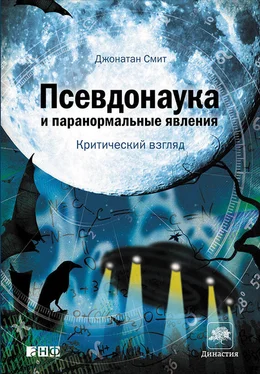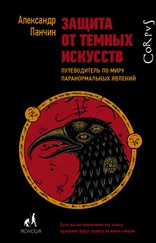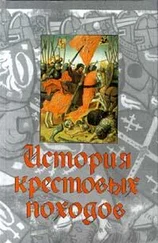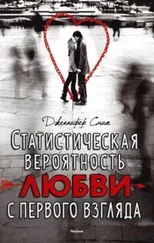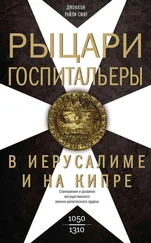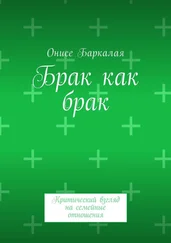Goldacre, B. (2007). The end of homeopathy. The Guardian, Friday, November 17, 2007. Retrieved April 1, 2008 from: www.badscience.net/2007/ll/a-kind-of-magic/
Haldeman, S. (Ed.). (1992). Principles and practice of chiropractic (2nd ed.). Norwalk, CT: Appleton & Lange.
Hall, H. (2008). What about acupuncture? The Skeptic, 14 (3), 8–9.
Hermann, L. L., & Ebmeier, K. P. (2006). Factors modifying the efficacy of transcranial magnetic stimulation in the treatment of depression: A review. Journal of Clinical Psychiatry, 67, 1870–1876.
Hines, T. (2003). Pseudoscience and the paranormal (2nd ed.). Amherst, NY: Prometheus Books.
Homola, S. (2008). Chiropractic: A profession seeking identity. Skeptical Inquirer, 32, 19–22.
Jarvis, W. T. (2000). Reiki. National Council against Health Fraud, www.ncahf.org / articles/o-r/reiki.html
Jarvis, W. T., & The National Council against Health Fraud. (2002). Homeopathy. In M. Shermer (Ed.), The skeptic encyclopedia of pseudoscience (pp. 347–356). Santa Barbara: CA: ABC–CLIO.
Krieger, D. (1979). The therapeutic touch: How to use your hands to help or to heal. Englewood Cliffs, NJ: Prentice Hall.
Lambert, M. J. (2004). Bergin and Garfield's handbook of psychotherapy and behavior change. New York: Wiley.
Lehrer, P. M., Woolfolk, R. L., & Sime, W. E. (2007). Principles and practice of stress management (3rd ed.). New York: Guilford Press.
Lewith, G., Kenyon, J., & Lewis, P. (1996). Complementary medicine: An integrated approach. Oxford: Oxford University Press.
Lilienfeld, S. O., Lynn, S. J., & Lohr, J. M. (Eds.). (2003). Science and pseudoscience in clinical psychology. New York: Guilford Press.
Lilienfeld, S. O., Ruscio, J., & Lynn, S. J. (Eds.). (2008). Navigating the mindfield: A guide to separating science from pseudoscience in mental health. Amherst, NY: Prometheus Books.
Lin, Z. (Ed.). (2000). Qigong: Chinese medicine or pseudoscience? Amherst, NY: Prometheus Books.
Lindeman, M., & Aarnio, K. (2006). Paranormal beliefs: Their dimensionality and correlates. European Journal of Personality, 20, 585–602.
Lindeman, M., & Saher, M. (2007). Vitalism, purpose and superstition. British Journal of Psychology, 98, 33–44.
Madsen, M. V., Gøtzsche, P. C., & Hro´bjartsson, A. (2009). Acupuncture treatment for pain: Systematic review of randomized clinical trials with acupuncture, placebo acupuncture, and no acupuncture groups. British Medical Journal, March, 3115. Retrieved March 3, 2009 from: www.bmj.com/cgi/reprint/338/jan27_2/a3115?maxtoshow=&HITS=10&hits=10&RESULTFORMAT=&fulltext=sham+acupuncture&searchid=1&FIRSTINDEX=0&resourcetype=HWCIT
Mann, F. (1993). Reinventing acupuncture: A new concept of an ancient medicine. Oxford: Butterworth-Heinemann.
McDonald, W. K. (2003). How chiropractors think and practice: The survey of North American chiropractors. Ada, OH: Institute for Social Research, Ohio Northern University.
NIH Consensus Development Program. (November 3–5,1997). Acupuncture – Consensus Development Conference Statement. National Institutes of Health. Retrieved April 1, 2008 from: consensus.nih.gov/1997/1997Acupuncturel07html.htm
Norcross, J. C, Koocher, G. P., & Garofalo, A. (2006). Discredited psychological treatments and tests: A Delphi poll. Professional Psychology: Research and Practice, 37 (5), 515–522.
Paul, N. L. (2006). Reiki for dummies. Hoboken, NJ: Wiley.
Pelletier, K. R. (2002). The best alternative medicine. New York: Simon & Schuster.
Puro, J. (2002). Feng shui. In M. Shermer (Ed.), The skeptic encyclopedia of pseudo-science (pp. 108–112). Santa Barbara: CA: ABC–CLIO.
Qi. (2007). In Encyclopædia Britannica. Retrieved September 17, 2007 from: www.britannica.com/eb/article-9023931
Ramachandra, V. S., & Blakeslee, S. (1998). Phantoms of the brain. New York: Quill, William Morrow.
Rosa, L., Rosa, E., Sarner, L., & Barrett, S. (1998). A close look at therapeutic touch. Journal of the American Medical Association, 279 (13), 1005–1010.
Rosner, A. (1997). A role of subluxation in chiropractic. Des Moines, IO: Foundation for Chiropractic Education and Research.
Saher, M., & Lindeman, M. (2005). Alternative medicine: A psychological perspective. Personality and Individual Differences, 39, 1169–1178.
Schubert-Soldern, R. (1962). Mechanism and vitalism. London: Burns & Oates.
Smith, J. C. (2007). The psychology of relaxation. In P. M. Lehrer, R. L. Woolfolk, & W. E. Sime (Eds.), Principles and practice of stress management (3rd ed., pp. 39–52). New York: Guilford Press.
The Chiropractic Paradigm. (2009). Retrieved April 6, 2009 from: www.chirocol-leges.org/paradigm_scopet.html
Watson, B. (1963). Mo Tzu: Basic writings. New York: Columbia University Press.
Wu, B. (2000). Lighting the eye of the dragon: Inner secrets of taoist feng shui. New York: St. Martin's Press.
yin-yang. (2007). In Encyclopœdia Britannica. Retrieved September 17, 2007, from: www.britannica.com/eb/article-9077972
Affective Computing. (2008). Million dollar challenge. Retrieved April 29, 2008 from: affect.media.mit.edu/milliondollarchallenge/
Barnes, P., Powell-Griner, E., McFann, K., & Nahin, R. (2002). CDC Advance Data Report #343: Complementary and alternative medicine use among adults: United States, 2002. Washington, DC: U. S. Government.
Barrett, S. (2003). Some thoughts about faith healing. Retrieved April 1, 2008 from: www.quackwatch.com/01QuackeryRelatedTopics/faith.html
Benson, H. (1975). The relaxation response. New York: Morrow.
Benson, H., Dusek, J. A., Sherwood, J. В., Lam, P., Bethea, C. R, Carpenter, W., et al. (2006). Study of the therapeutic effects of intercessory prayer (STEP) in cardiac bypass patients: A multicenter randomized trial of uncertainty and certainty of receiving intercessory prayer. American Heart Journal, 151, 934–942.
Bronson, P. (2002). A prayer before dying. Wired. December. Retrieved April 1, 2008 from: www.wired.com/wired/archive/10.12/prayer_pr.html
Bupp, N. (2005). Follow-up study on prayer therapy may help refute false and misleading information about earlier clinical trial. Press release from the Commission for Scientific Medicine and Mental Health, Amherst, NY, July 22. Retrieved April 1, 2008 from: www.godlessgeeks.com/LINKS/PrayerTherapy.htm
Byrd, R. C. (1988). Positive therapeutic effects of intercessory prayer in a coronary care unit population. Southern Medical Journal, 81, 826–829.
Carroll, R. T. (2007). Faith healing. The skeptics dictionary. Retrieved 17 October, 2007 from www.skepdic.com
Carroll, R. T. (2009a). John of God. Retrieved April 6, 2009 from: skepdic.com/johnofgod.html
Carroll, R. T. (2009b). Sicher-Targ distant healing report. Retrieved April 7, 2009 from: skepdic.com/sichertarg.html
Cha, K. Y., & Wirth, D. P. (2001). Does prayer influence the success of in vitro fertilization-embryo transfer? Journal of Reproductive Medicine, 46, 781–787.
Charity Navigator. (2007). Retrieved April 1, 2008 from: www.charitynavigator.org/index.cfm?bay=search.summary&orgid=5206
Chopra, D. (2008). Taking the afterlife seriously. Skeptic, 13, 55–57. Argues that there are 11 studies showing that «prayer works».
Flamm, B. L. (2002). Faith healing by prayer: Review of Cha, KY, Wirth, DP, Lobo, RA. Does prayer influence the success of in vitro fertilization-embryo transfer? Scientific Review of Alternative Medicine, 6 (1), 47–50.
Читать дальше
Конец ознакомительного отрывка
Купить книгу
